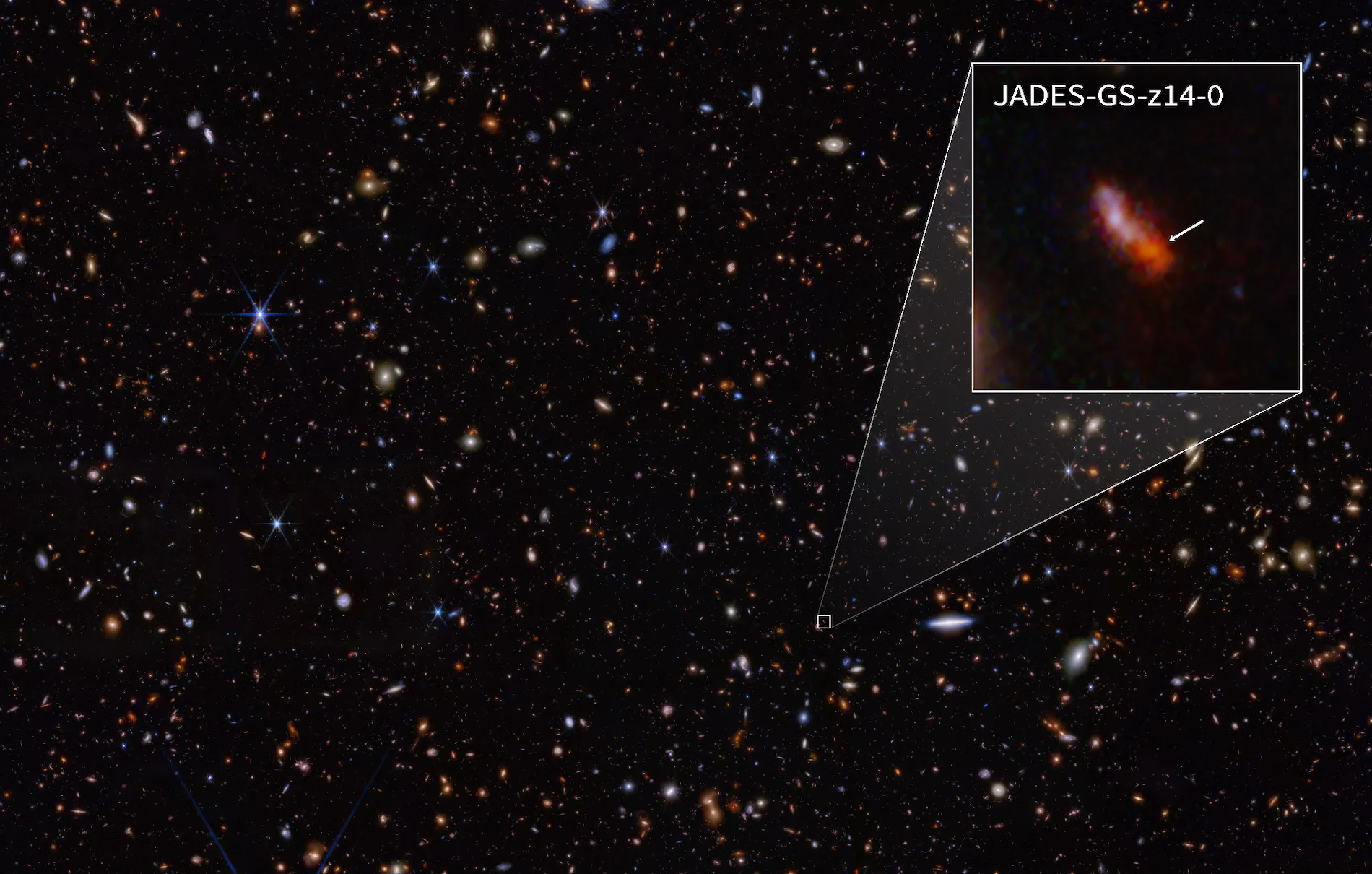
Where no man has gone before: The James Webb Space Telescope continues to dazzle astronomers and the public with unprecedented views of our universe. Today was no exception when scientists revealed they had spotted the most distant galaxy ever viewed.
Named after the JWST Advanced Deep Extragalactic Survey, the JADES-GS-z14-0 galaxy lies in an area of the universe known as the Cosmic Dawn. This region spans from about 50 million to one billion years after the Big Bang. Light from that distance is measured by its redshift. Redshift refers to the amount an object’s light wavelengths have stretched due to the universe’s expansion.
Between October 2023 and January 2024, astronomers measured a galaxy using Webb’s Near-Infrared Spectrograph (NIRSpec) with a redshift value of 14.32 (the light’s wavelength is 14 times its normal length). This measurement places its age at about 290 million years after the Big Bang, making it the oldest and most distant galaxy ever recorded.
The previous record holder, JADES-GS-z13-0, was discovered in 2022 with a redshift of 13.2, placing it about 330 million years after the Big Bang and roughly 13 billion light years from Earth. The JADES team also spotted two galaxies with redshift values over 10 and another at around 13 at this same time.
Something that astounded scientists about JADES-GS-z14-0 is its luminosity. Judging from the IR images, astronomers believe the galaxy spans about 1,600 light years across. Its brightness confirms that the light comes from young stars rather than a supermassive black hole. They also note that such luminosity indicates that the galaxy contains “several hundreds of millions of times the mass of the Sun!”
The study’s co-author Stefano Carniani remarked that further data from Webb’s Mid-Infrared Instrument (MIRI) reveals several other exciting discoveries regarding the distant galaxy.
“We see that the color of the galaxy is not as blue as it could be, indicating that some of the light is reddened by dust, even at these very early times … JADES-GS-z14-0 was detected at longer wavelengths with Webb’s MIRI, a remarkable achievement considering its distance … [MIRI measurements indicate] the presence of strong ionized gas emission in the galaxy in the form of bright emission lines from hydrogen and oxygen. The presence of oxygen so early in the life of this galaxy is a surprise and suggests that multiple generations of very massive stars had already lived their lives before we observed the galaxy.”
It is astounding that this celestial observation breaks all theoretical models and simulations used to define our early universe. Carniani said it is unlike any of the other hundreds of high redshift galaxies the team has observed in its survey. He predicts Webb scientists will discover many other highly luminous galaxies at even earlier and more distant points over the next 10 years.
“We’re thrilled to see the extraordinary diversity of galaxies that existed at Cosmic Dawn!” Carniani exclaimed.










